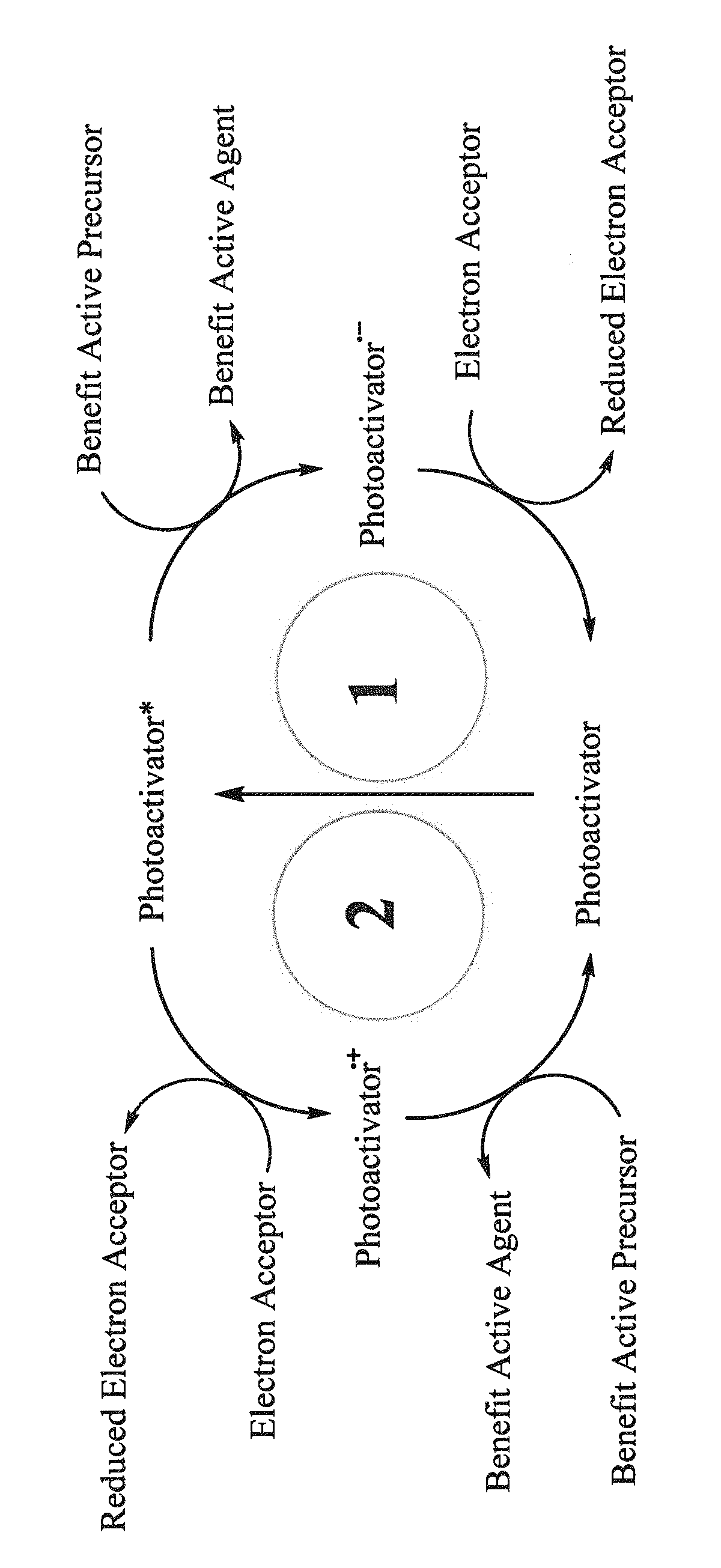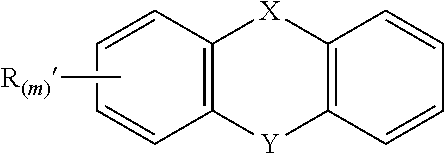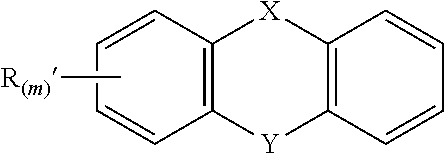Photoactivators
a technology of photoactivators and photoactivators, which is applied in the field of photoactivators, can solve the problems of limited disinfection and sanitization of biofilms, limited disinfection and sanitization ability of conventional low-cost cleaners, etc., and achieves the effect of eliminating biofilms and eliminating biofilms
- Summary
- Abstract
- Description
- Claims
- Application Information
AI Technical Summary
Benefits of technology
Problems solved by technology
Method used
Image
Examples
examples
Photoactivator Examples
[0109]The following are non-limiting examples of various water soluble organic photoactivators, and syntheses thereof, of the present invention.
9-Oxo-9H-thioxanthene-2-carboxylic acid chloride
[0110]A dry 500 mL 1-neck recovery flask containing 13.25 g of 9-oxo-9H-thioxanthene-2-carboxylic acid and a magnetic stir bar is fitted with a dry condenser connected to Firestone valve (with the bubbler exit going through water to trap evolved HCl). After adding 250 mL of thionyl chloride the system is vacuum / nitrogen cycled 5 times and left under positive nitrogen pressure (suspended solid). After refluxing for 5 hours thionyl chloride is removed in vacuo using a rotary evaporator at 60° C. The residual solid on the flask walls is scraped down and broken up and placed under vacuum overnight (0.3 mm Hg) at room temperature. The vacuum is broken while introducing argon and the solid is broken up using a glass rod and spatula while maintaining a flow of argon over the mou...
PUM
| Property | Measurement | Unit |
|---|---|---|
| wavelength | aaaaa | aaaaa |
| wavelength | aaaaa | aaaaa |
| wavelength | aaaaa | aaaaa |
Abstract
Description
Claims
Application Information
 Login to View More
Login to View More - R&D
- Intellectual Property
- Life Sciences
- Materials
- Tech Scout
- Unparalleled Data Quality
- Higher Quality Content
- 60% Fewer Hallucinations
Browse by: Latest US Patents, China's latest patents, Technical Efficacy Thesaurus, Application Domain, Technology Topic, Popular Technical Reports.
© 2025 PatSnap. All rights reserved.Legal|Privacy policy|Modern Slavery Act Transparency Statement|Sitemap|About US| Contact US: help@patsnap.com



